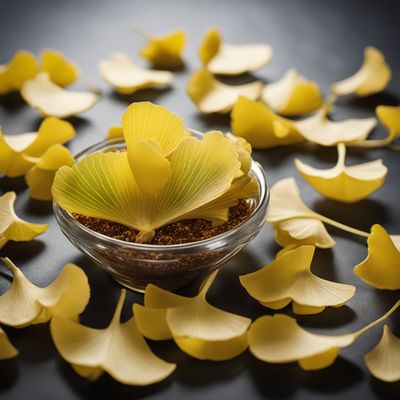
Ingredient
Mate infusion material
The Energizing Elixir: Unveiling the Secrets of Mate Infusion
Mate infusion material, also known as yerba mate, is derived from the leaves and twigs of the Ilex paraguariensis plant. It has a vibrant green color and a robust, earthy flavor with hints of bitterness. The texture is typically coarse, and the appearance resembles dried tea leaves. Yerba mate is often enjoyed as a hot or cold beverage, prepared by steeping the leaves in hot water or combining them with other ingredients to create unique infusions.
Origins and history
Yerba mate has a rich cultural heritage in South America, particularly in countries like Argentina, Uruguay, and Paraguay. It has been consumed for centuries by indigenous tribes and later gained popularity among European settlers. Yerba mate holds significant social and ceremonial importance, often shared among friends and family during gatherings or mate circles. Its cultivation and consumption have become deeply ingrained in the cultural fabric of these regions.
Nutritional information
Yerba mate is a good source of antioxidants, vitamins, and minerals. It contains caffeine, theobromine, and theophylline, which provide a natural energy boost. Additionally, it offers essential nutrients such as vitamins B1, B2, and C, as well as minerals like potassium, magnesium, and manganese.
Allergens
Yerba mate may contain traces of caffeine, which can cause sensitivity or allergic reactions in some individuals.
How to select
When selecting yerba mate, look for vibrant green leaves that are free from dust or debris. Opt for brands that source their mate from reputable producers and ensure fair trade practices. Additionally, consider the type of cut, as finer cuts tend to produce a stronger flavor.
Storage recommendations
To maintain the freshness of yerba mate, store it in an airtight container in a cool, dry place away from direct sunlight. Avoid exposure to moisture, as it can affect the flavor and quality of the leaves. Proper storage will help preserve the aroma and potency of yerba mate for an extended period.
How to produce
Yerba mate can be grown in regions with a subtropical climate, such as parts of South America and certain areas in the United States. It requires well-drained soil, partial shade, and regular watering. With proper care and maintenance, it is possible to cultivate yerba mate at home or in a small garden.
Preparation tips
To prepare yerba mate, fill a gourd or cup with yerba mate leaves, leaving some space at the top. Gently shake the container to allow the finer particles to settle. Insert a bombilla (a metal straw with a filter) into the leaves, and pour hot water (not boiling) over them. Sip the infusion through the bombilla, adding more hot water as desired. Yerba mate can also be used as a base for various flavored infusions or incorporated into baked goods and desserts for a unique twist.
Substitutions
Green tea can be used as a substitute for yerba mate, offering a similar earthy flavor and a moderate caffeine content. However, the distinct taste of yerba mate may be difficult to replicate fully.
Culinary uses
Yerba mate is commonly used to prepare traditional mate drinks, which are shared among friends and family in South American countries. It is also used as a base for refreshing iced mate, mate lattes, and mate cocktails. Additionally, yerba mate can be incorporated into baked goods, smoothies, and desserts to infuse them with its unique flavor and energizing properties.
Availability
Yerba mate is primarily cultivated and consumed in South American countries such as Argentina, Uruguay, Paraguay, and Brazil. It is also gaining popularity in other parts of the world, including the United States and Europe.


